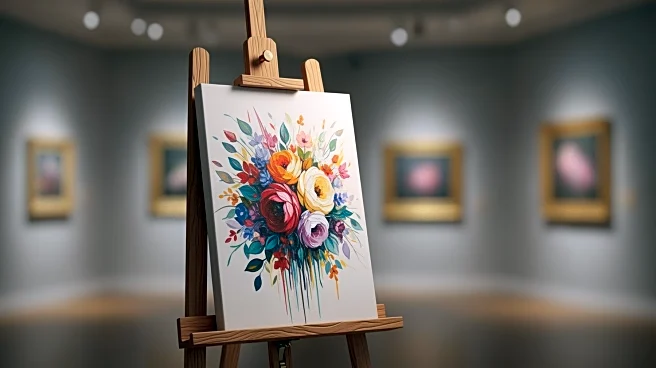What's Happening?
The recent November auctions in New York have revealed intriguing trends in the art market, with both record-breaking sales and unexpected failures. Gertrude Abercrombie's 'Message for Mercy' sold for $1.2
million at Sotheby's, surpassing its estimate and setting a new auction record for the artist. Julia Jo's 'Rhyme or Reason' also exceeded expectations, selling for $203,200 at Christie's, highlighting her rising prominence in the art world. Conversely, some artworks did not fare as well. Jacques Lipschitz's 'Tete' sold for only half its estimated price, and Sterling Ruby's 'SP44' failed to sell at all, indicating fluctuating interest in certain artists. These results underscore the dynamic nature of the art market, where emerging artists can achieve significant success while established names may face challenges.
Why It's Important?
The outcomes of these auctions are significant for the art market, reflecting shifting trends and collector preferences. The success of artists like Gertrude Abercrombie and Julia Jo suggests a growing appreciation for unique and emerging voices in art, potentially influencing future exhibitions and gallery shows. On the other hand, the struggles faced by artists like Jacques Lipschitz and Sterling Ruby highlight the volatility of art valuations and the importance of market timing. These auction results can impact the strategies of art investors and collectors, who may adjust their focus towards emerging artists or reconsider investments in established names. The art market's response to these trends could shape future auction strategies and influence the broader cultural landscape.
What's Next?
Following these auction results, galleries and collectors may reassess their portfolios and strategies. Emerging artists like Julia Jo could see increased demand for their works, leading to more exhibitions and higher valuations. Established artists facing challenges may need to explore new avenues to reinvigorate interest in their work. Auction houses might adjust their estimates and marketing strategies to better align with current market dynamics. Additionally, the art community may engage in discussions about the factors influencing these trends, such as cultural shifts or economic conditions. These developments could lead to a reevaluation of how art is valued and promoted in the market.
Beyond the Headlines
The auction results also raise questions about the cultural and economic factors influencing art valuations. The success of emerging artists may reflect a broader cultural shift towards diversity and new perspectives in art. Conversely, the challenges faced by established artists could indicate changing tastes or economic pressures affecting collector decisions. These dynamics may prompt discussions about the role of art in society and its value beyond monetary terms. Additionally, the fluctuating market could impact the careers of artists, influencing their creative choices and opportunities for collaboration. Understanding these deeper implications can provide insights into the evolving relationship between art, culture, and economics.












